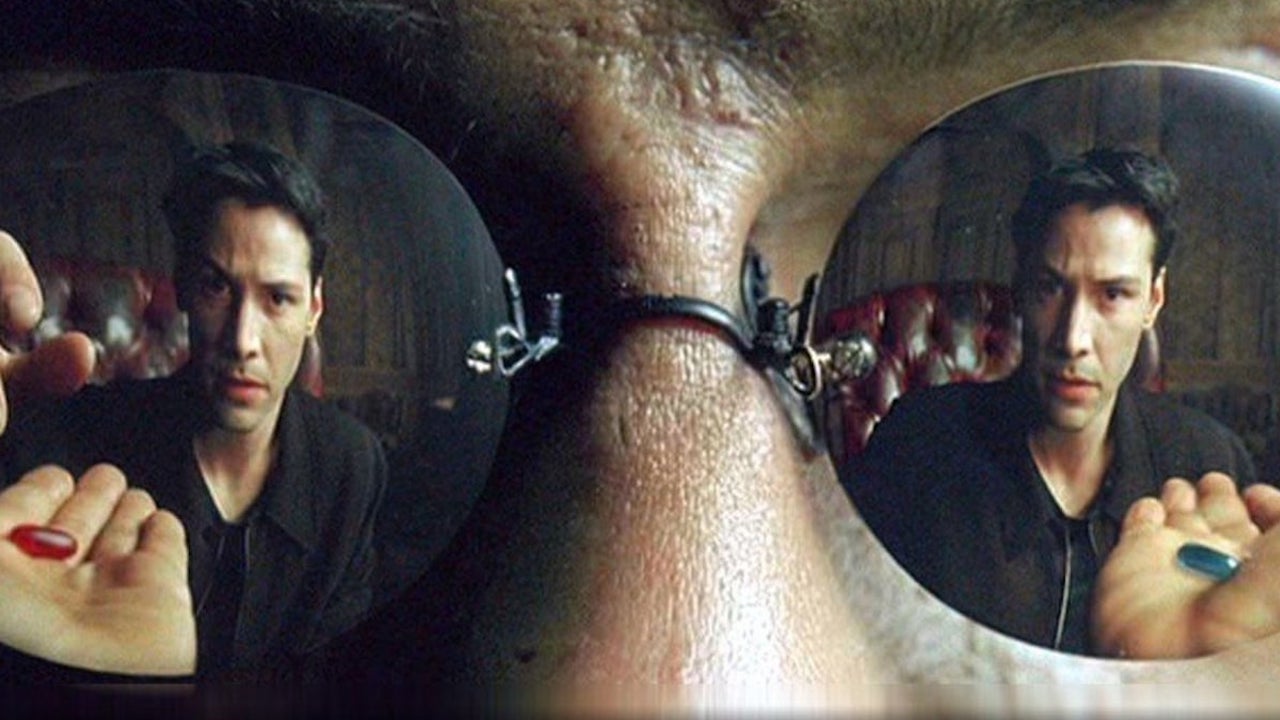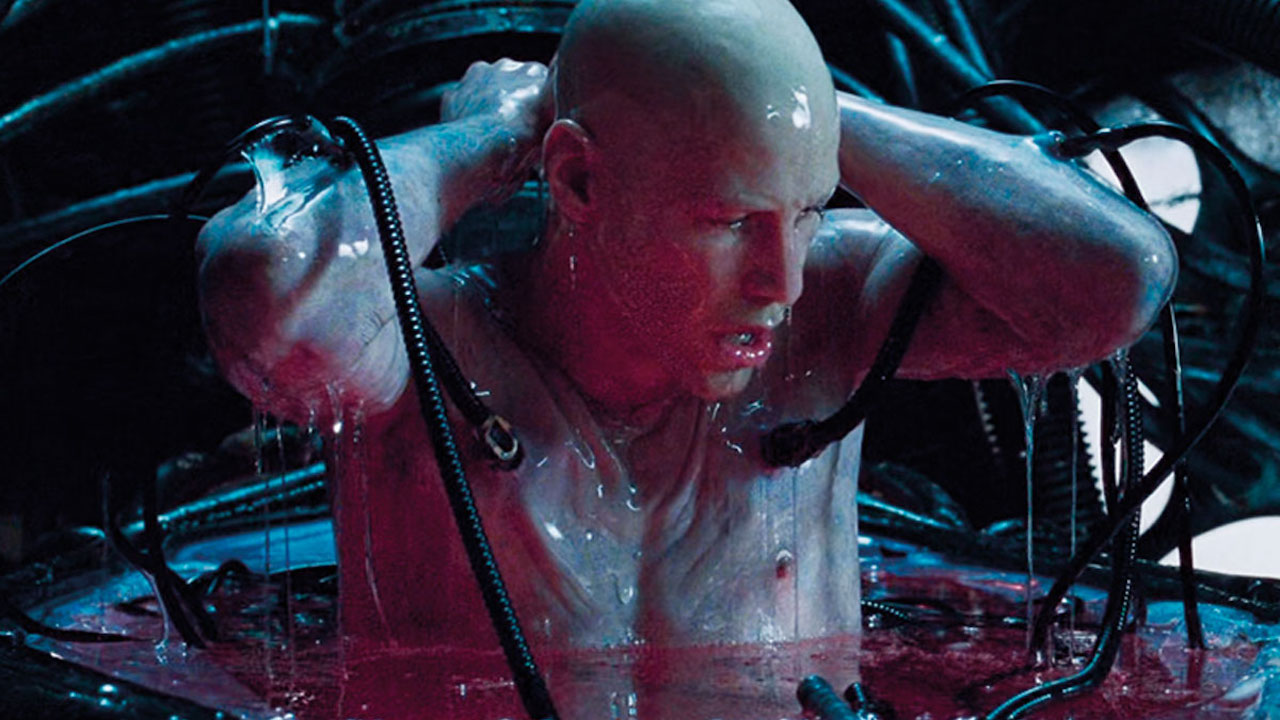The Matrix And Gender Identity: The Trans Narrative Behind The Wachowskis’ Sci-Fi Classic
Goodbye, Mr. Anderson.

The power of science fiction has always been its ability to explore complex topics we’re dealing with in the world in a fantastical and escapist way. And even over twenty years after its release, The Matrix is one of the most seminal examples of a perfect science fiction film for that exact reason. Upon its 1999 release, the Wachowskis’ blockbuster discussed the burgeoning fears of life on the internet blurring the lines between reality. It brought Eastern influences to the modern action movie. And alongside that and more recently, The Matrix themes about gender identity are being more acutely discussed.
Lana Wachowski came out as trans in 2010 and her sister/directing partner Lilly Wachowski came out in 2016. Although it took the filmmakers years to aptly discuss the trans themes in their most popular work, LGBTQ+ audiences have been looking at The Matrix through a queer lens for years. Now that The Matrix Resurrections has brought the franchise back to the forefront, let’s dive into the elements of the original that subtly discuss the trans experience and catch us all up on this element of the film.

The Matrix As A Trans Allegory
The Matrix co-writer and director Lilly Wachowski spoke all about the trans narrative of the 1999 classic to Netflix Film Club last year, sharing that trans people come up to her and say the science fiction films saved their life. Wachowski said that the allegory was the “original intention” for The Matrix but twenty years ago Hollywood wasn’t “ready” to be a public dialogue. The filmmaker spoke to why the film speaks to trans people with these words:
When you talk about transformation, specifically in the world of science fiction, which is just about imagination and world-building and the idea of the seemingly impossible becoming possible, I think that’s why it speaks to the [trans community] so much. And I’m grateful that I can be a part of throwing them a rope to help them along their journey… The Matrix stuff was all about the desire for transformation, but it was all coming from a closeted point of view.
The Matrix of course follows Keanu Reeves’ Thomas Anderson as he tracks down the mysterious “Matrix” he has encountered around the internet. In his efforts to get to the bottom of it, Thomas is offered the choice between a red and blue pill moving forward by Laurence Fishburne’s Morpheus. He chooses the red pill and wakes up in a pod to find out that he’s been living in a simulated reality following a war-torn Earth. With this knowledge in mind, Thomas assumes his hacking alias “Neo” and goes back into the Matrix to “unplug” the rest of humanity. Time to get into the specific discussions around the plot and its trans narrative.

Breaking Down How The Trans Narrative In The Matrix
Perhaps the most clear line to the trans community is the use of names in The Matrix. When Keanu Reeves is in the Matrix he is known as Thomas Anderson, but once he learns of his true identity, he no longer applies the title to himself. He is “Neo” instead. And in order to embrace himself as the chosen one and go on his action-packed journey, he chooses a red pill. The pills in The Matrix have been compared to hormone therapy. In the late ‘90s, a common estrogen pill that was prescribed to trans women is called Premarin, which is in fact red.
When Neo wakes from the Matrix, he finds himself in a liquid-filled egg shaped object. Comparisons have been drawn here to the trans slang term of “egg”, which is defined by the community as a person who has not realized they are trans yet. When someone does come to the realization it's referred to as “egg cracking,” which happens visually in the sequence when Neo emerges from the pod.
Additionally, when Neo and Trinity become partners once he assumes himself as Neo, they exhibit androgynous looks. Both of them have similar short haircuts, matching sunglasses and leather getups. When together, neither of them wear specifically male or female distinctions in their attire. Many believe this to be a nod to them embracing gender fluid identities after Neo previously wears clothing of the gender binary in the Matrix when he was Thomas Anderson.
Going back to the importance of names, let’s quote an observation from Vulture, who summed up the allegory like this:
Neo has dysphoria. The Matrix is the gender binary. The agents are transphobia.
...to specifically close in on that last sentence. Hugo Weaving’s character famously repeats “Mr. Anderson” throughout The Matrix with an emphasis on “Mister”. And since in this trans allegory, that would be Neo’s dead name, that'd mean the agents could symbolize transphobic people at odds with our heroes. Lastly, there’s a moment at the end of The Matrix when the camera zooms toward the words “System Failure” and the letters between the space “M” and “F” (as in male and female) are closed in on as the narration “you’re afraid of us, you’re afraid of change” is said. It's not as subtle once we pull the pieces together.

The Trans Character Who Was Cut From The Matrix
It should also be noted that the Wachowskis almost blatantly added a transgender character in the form of Switch, who is played by Belinda McClory in the film. Per their original plans, Switch was going to be a man in the real world and a woman in the Matrix. However, as Lilly Wachowski noted previously, Hollywood was not on board with making its trans themes this visible and instead McClory played Switch throughout.
It makes sense now why the character was given that name, and at least McClory had the chance to also play into the androgynous look, affirming its visual style as a trans metaphor that holds up today. The Matrix is so many more things than this aspect of it. It’s a science fiction and action masterpiece, a groundbreaking film and many would say a perfect one. But as we continue to talk about The Matrix, it’s enlightening for more people to understand the roots of its storyline and celebrate the two incredible trans filmmakers who crafted this historical piece of cinema that also so happens to have deep LGBTQ+ themes for those who would like to identify and look for it. Check out how to stream all the Matrix movies here on CinemaBlend.
CINEMABLEND NEWSLETTER
Your Daily Blend of Entertainment News

Sarah El-Mahmoud has been with CinemaBlend since 2018 after graduating from Cal State Fullerton with a degree in Journalism. In college, she was the Managing Editor of the award-winning college paper, The Daily Titan, where she specialized in writing/editing long-form features, profiles and arts & entertainment coverage, including her first run-in with movie reporting, with a phone interview with Guillermo del Toro for Best Picture winner, The Shape of Water. Now she's into covering YA television and movies, and plenty of horror. Word webslinger. All her writing should be read in Sarah Connor’s Terminator 2 voice over.










